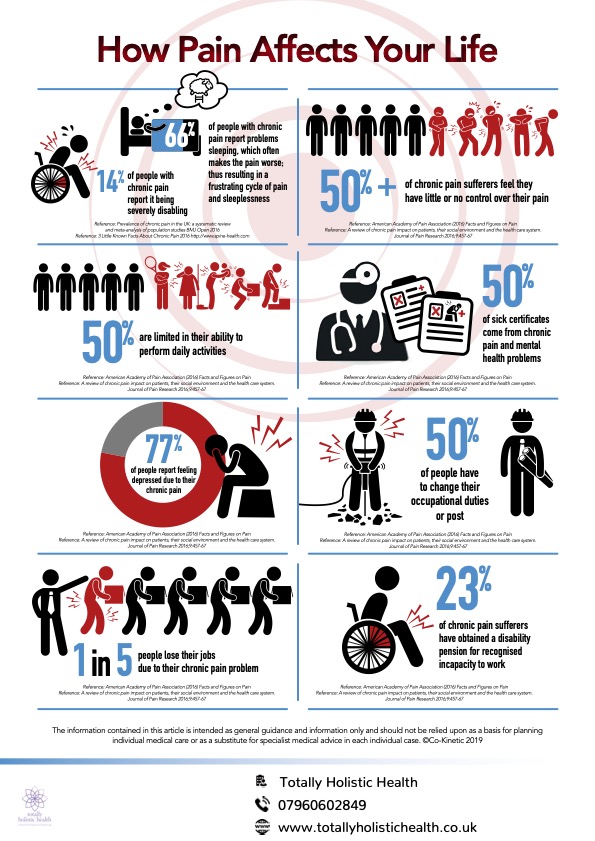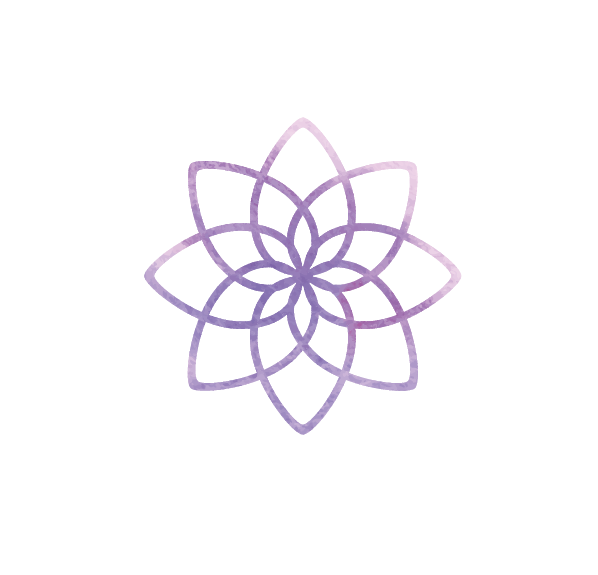Coping with Chronic Pain
Pain means different things to different people, in different contexts, and based on different experiences. Acute, short-lived pain following a traumatic injury, in many cases heals. The pain that becomes increasingly hard to live with and manage, is the pain that has persisted month after month and often year after year. Some adults say they have lived with pain their entire lives from teenage years, whereas others develop this persistent or chronic pain later in life, sometimes for reasons that can’t be diagnosed.
Chronic pain is notoriously difficult to treat as unlike acute pain which tends to be more ‘black and white’, chronic pain have no history of significant injury or disease.
Living with chronic pain is almost a disease in itself. It slowly and progressively eats away at you, your confidence, self- worth, and independence. It can consume your life and thoughts, often alienating you from your friends and family even your workplace. Living with pain is exhausting, lack of sleep, anxiety and depression often go hand in hand with pain. This can lead to anger and frustration and problems with your relationships at home and with yourself.
The physical pain can stop you from doing things you love, like taking walks, playing sports and socialising. Equally it can even stop you from doing the things you don’t love, like housework, cooking and chores. But the effect of not being able to physically do things can have two consequences. Firstly, it’s not good for your joints and muscles, your fitness, weight or cardiovascular health. Secondly, losing your ability to be active can lead to more emotional problems of dependence, defeat, and feeling ‘useless.’
Everyone has their own stories to tell about pain. It may be a mother unable to lift her child when its hurt or crying, or having been the breadwinner in the home who is now unemployed worrying about bills, and supporting your family. The sense of loss can be overwhelming, loss of the life you imagined, the things you planned to do, and a disconnect from others who are seemingly going about life ‘as normal’.
So what? You know all of this, you may be living it daily and you may have tried a bunch of things already. The reality is there is no quick fix to chronic pain, nor is it as simple as an on/off switch. Chronic pain is more like a dimmer switch, there are things that turn it up, but there are also things you can do to reduce the pain to a gentle glow. Not one specific thing will work, and what works for your friend doesn’t mean it will work for you.
Firstly, lets dispel some myths about chronic pain:
If you cannot find the exact source of the pain then it must be in your head – WRONG
Chronic pain isn’t that bad, you get used to it after a while – WRONG
You should expect that one day your pain will be completely cured – WRONG
You went out yesterday so your pain can’t be that bad – WRONG
Chronic pain treatment should be effective within a short period of time – WRONG
You must be weak, a low pain threshold – WRONG
If you look healthy you cannot be in pain – WRONG
If you have failed to control your pain in the past you will fail in the future – WRONG
Chronic pain is the only reason for all the problems you have – WRONG
Just push through it, no pain, no gain – WRONG
If pain can be reduced through stress management techniques then it must be imaginary pain – WRONG
Your pain will improve if you remain inactive, and avoid physical activity – WRONG
People with chronic pain are just lazy and looking for attention – WRONG
To consider yourself worthwhile you must be able to function in the same way you did before the pain – WRONG You must have complete control over everything in your life – WRONG

People often say they feel trapped by the pain, confined by their body and what it can’t physically do as well confined emotionally, sometimes unable to engage in the world, or make meaningful contact with others. There is a way out though, and the key steps to getting there include:
STEP 1
Firstly educating yourself and those around you, family, friends and care-givers about chronic pain. Understanding how it really works and its entanglement with the brain’s emotions and experiences, past and present. Step 1 is all about empowering yourself through education and understanding, which can lead to acceptance and a sense of calm, because there are ways to improve your daily life. You can find a balance between activity and rest and a balance in your emotions that allows you to get more out of life. I have produced a leaflet in this series called ‘Understanding the Complexity of Chronic Pain’ please feel free to download.
STEP 2
Arm yourself with coping tools. As you know every day is different, some are better than others, and some are terrible, but with the right tools you can find the perfect balance that works just for you. Coping tools may include exercise, activity, healthy diet, yoga, medication, practicing mindfulness or joining a pain support group. Techniques to use at home include meditation, distraction and deep breathing. Again there is another downloadable leaflet covering these coping tools.

STEP 3
Seeing the right pain specialists or physical therapists can also be of great help and support. Physical therapists are experts in handling pain, finding the source of the pain and treating your body holistically. Physical therapy can be very beneficial in managing chronic pain by promoting joint movement, using exercises to reduce stiffness and improve muscle strength – all of which can reduce your pain and improve your mobility which may help with daily activities. Specific nerve mobility treatments can help reduce sensitivity to pain and massage has always been a trusty stalwart as it reduces stress and anxiety as well as pain.
STEP 4
Finding an activity you love to do is really important. This could be walking the dog, dancing, singing in the choir or painting, anything as long as you love it. Enjoying doing the activity is part of the treatment process, as it feeds into your emotional state, promoting the release of endorphins (happy hormones) which in turn will make you feel better. It may have to be a new activity that you can manage with your pain, or something you used to do in the past but with less vigour, however finding that something to do regularly without a grudge (or the sense of I am only doing this because I have to/was told to) is another vital coping tool.
I have created some fabulous handouts to help you deal with Chronic Pain – including a daily pain diary, Relaxation Techniques, How to manage activity levels, How pain affects your life and coping strategies. If you’d like to download these resources please feel free to download them from the link below.
My name is Julie Elder. I am an holistic therapist and yoga teacher who specialises in utilising the body’s ability to heal itself using a variety of techniques including Bowen Technique and Kinesiology. I am also an Aromatherapist, Reflexologist, Reiki master and an advocate for pursuing an organic lifestyle.
Want to regularly find out the latest goings on at Totally Holistic Health central why not sign up to my regular newsletter !! Pop over here to Totally Holistic News to keep up to date with all the latest news, yoga videos, health advice and blogs.
I won’t bombard you with lots of spammy stuff and at the end of the day you can always request to unsubscribe!! I won’t mind!
Julie Elder
Totally Holistic Health

